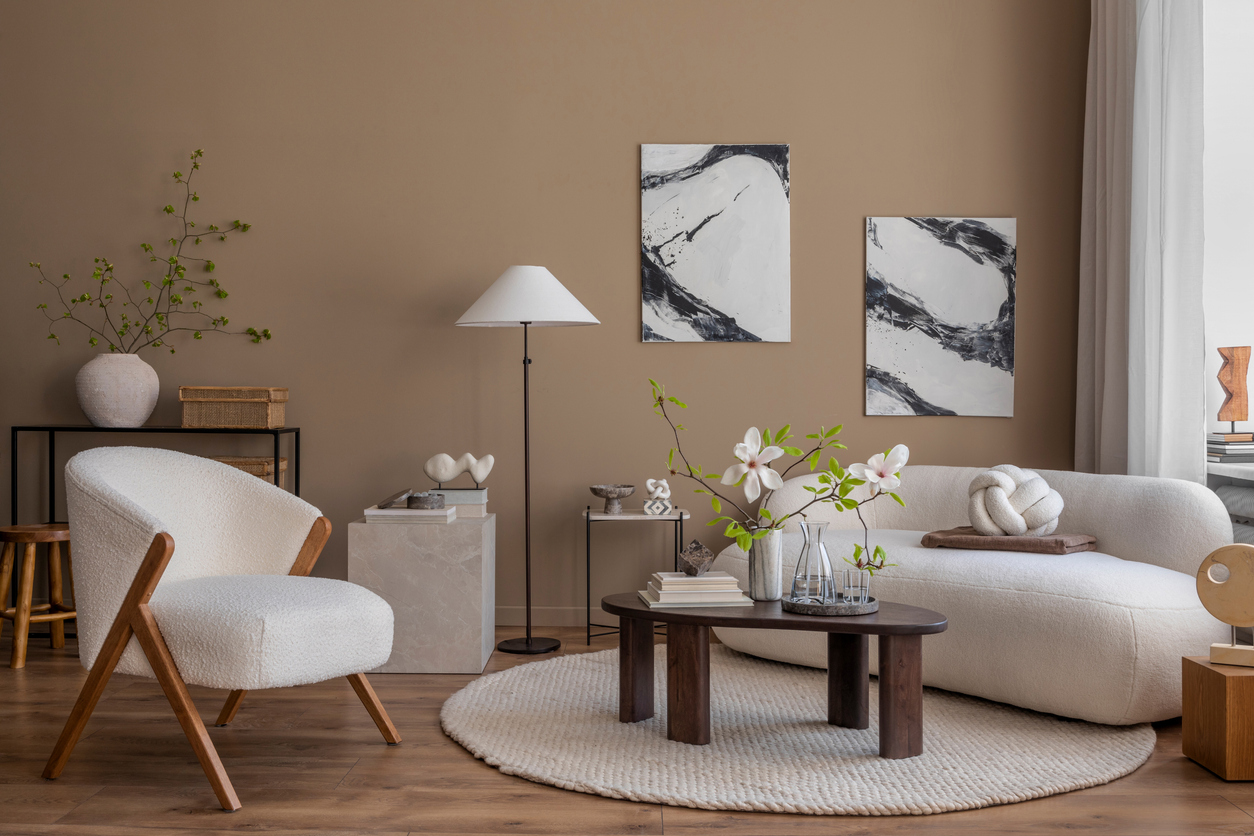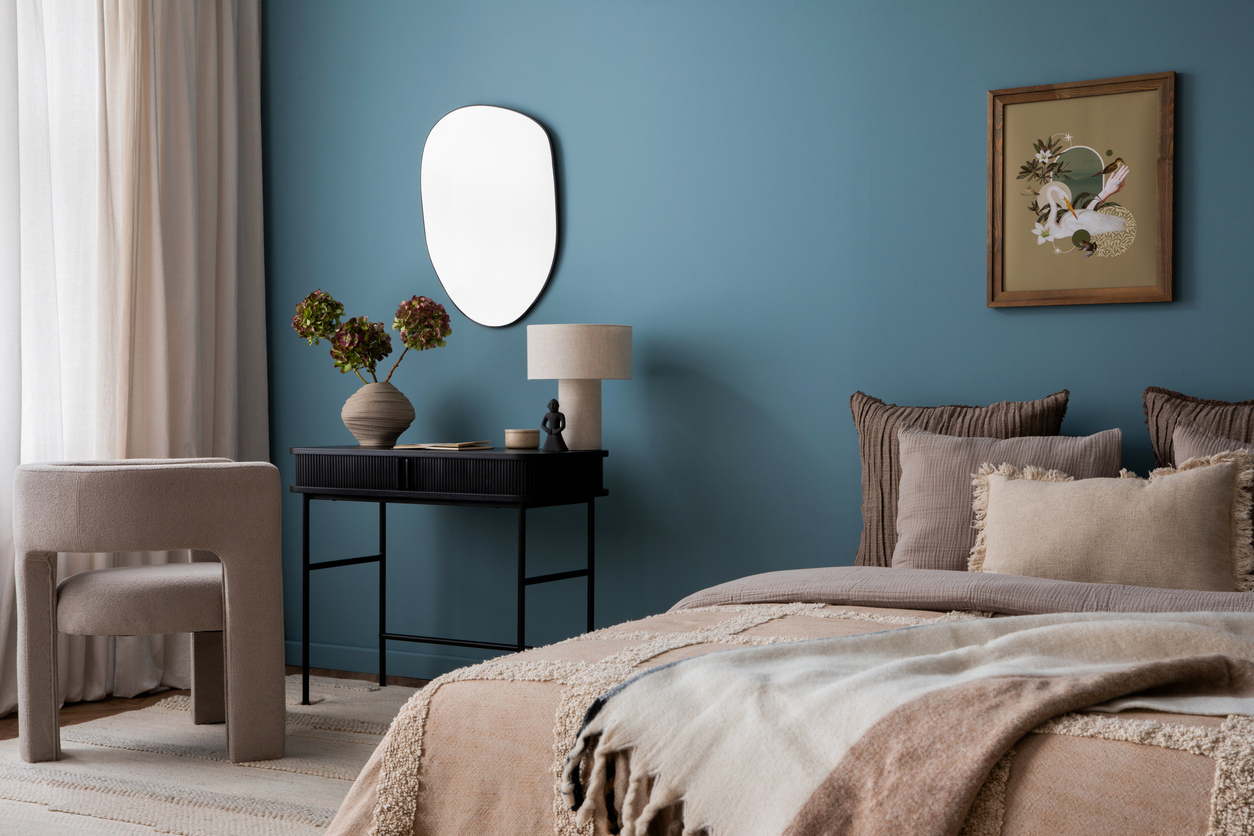Knowing how to match paint colors is the first step to making your interior house painting in Longmont, CO a success. Selecting the right shades can feel overwhelming when faced with endless options, but with a little guidance, it doesn’t have to be stressful. The right paint colors can elevate your home’s look and create a space that feels cohesive and inviting.
In this blog, we’ll walk you through expert tips to help you select shades like a professional interior house painter. Whether it’s a single accent wall or your entire home, these insights will help you achieve incredible results.
Key Takeaways
How to Match Paint Colors
1. Start with One Color as Your Anchor
The easiest way to create a balanced design is to choose one foundational color as your anchor. You can do this by using a color wheel. This shade should reflect the mood or atmosphere you’re aiming for—warm and cozy, bright and airy, or bold and dramatic. For example, soft grays and neutral beiges are timeless options that work in any space, while a deep navy blue or forest green can add personality.
Once you’ve settled on your main color, expand your palette by incorporating complementary or accent colors. A good rule of thumb is to have 60% of the room in the dominant color, 30% in a secondary color, and 10% in an accent shade. This method helps you maintain balance while adding variety. I once worked with a homeowner who loved rich jewel tones, and by using deep emerald green as the anchor and pairing it with gold and cream accents, their living room became a stunning focal point.
2. Pay Attention to Light Sources
Lighting can completely change how paint colors appear. This is especially true for interior house painting. Natural light varies throughout the day, creating different effects. South-facing rooms often amplify warm tones, while north-facing spaces can make colors appear cooler. Additionally, artificial lighting plays a huge role. Warm light from incandescent bulbs softens colors, while cooler LED lighting brings out brightness. Testing paint samples under different lighting conditions in your home is the best way to understand how shades will look in real life.
A homeowner I worked with in Longmont had chosen a sunny yellow for their kitchen but realized after testing it that the color turned too harsh under their cool LED lights. By switching to a softer pastel yellow, we achieved the cheerful look they wanted without overwhelming the space.

3. Coordinate Colors with Your Decor
Your home’s existing features should guide your color choices. Furniture, flooring, cabinetry, and other permanent fixtures play a significant role in determining what works best. Matching paint to these elements creates a cohesive look that feels intentional. Neutral-toned furniture, for example, pairs well with bold walls, while colorful decor is complemented by subtler shades.
For homes with hardwood floors, warm tones like taupe or beige often create a seamless flow. If you have tiles, consider shades that bring out their undertones. I once helped a family who loved their vibrant kitchen backsplash but struggled to match the rest of the space. By pulling a muted gray-green from the tiles, we created a color scheme that tied the kitchen together beautifully.
4. Test Colors Before You Commit
Sampling paint colors is one of the most important steps in interior house painting. Painting small swatches on multiple walls allows you to see how a color changes with light and time of day. It’s also crucial to test against existing elements, like trim or furniture, to ensure the shade works well. When transitioning from a dark to a light wall, using primer can help your new color shine through without interference.
While technology and apps can help visualize colors, nothing beats testing physical samples in your space. A couple I worked with in Erie initially chose a soft gray based on an app preview. After testing, they realized it leaned too blue in their space. By trying a few more options, they found the perfect greige that complemented their style.

5. Rely on Professional Advice
Partnering with a professional interior house painter can save you from costly mistakes and unnecessary stress. Interior house painters bring a wealth of experience, offering suggestions for colors and finishes that you might not have considered. They also know which types of paint work best for specific areas, like high-moisture bathrooms or high-traffic hallways.
During one project in Longmont, I worked with a homeowner who wanted a rich teal for their dining room. They were worried it might feel too dark. By pairing it with bright white trim and gold accents, we achieved a striking look that felt both bold and balanced. Professional painters not only help with color selection but also deliver flawless application that brings your vision to life.
Bring Your Vision to Life
Choosing the right paint colors can feel intimidating, but it doesn’t have to be. By starting with a foundational color, considering lighting, coordinating with existing decor, and testing shades, you’ll set yourself up for success. Partnering with an experienced interior house painter takes the guesswork out of the process and ensures stunning results.
If you’re planning interior house painting in Longmont, CO, or you live in Fort Collins, Erie, Arvada, or the surrounding areas, Foothills Painting is ready to help. Call us at 970-427-2866 for a FREE estimate. Let’s create a home you’ll love for years to come!






